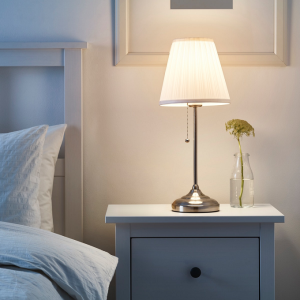Chandeliers have a long and rich history that dates back centuries. Originally, chandeliers were used to hold candles and provide light in large, grand spaces such as palaces and cathedrals. Over time, chandeliers evolved to incorporate more advanced lighting technology, such as gas and electricity. Despite these advancements, chandeliers have remained a popular lighting fixture due to their timeless elegance and ability to add a touch of luxury to any space.
Today, chandeliers are not only found in grand ballrooms and mansions but also in homes of all sizes and styles. They have become a staple in interior design, adding a touch of glamour and sophistication to living rooms, dining rooms, bedrooms, and even bathrooms. Chandeliers come in a wide variety of styles, sizes, and materials, making it easy to find the perfect one to suit any space.
Key Takeaways
- Chandeliers are a timeless lighting fixture that can add elegance and sophistication to any space.
- When choosing a chandelier, consider the size and style of your room to ensure a perfect fit.
- Materials and finishes can add texture and personality to your chandelier, from crystal to brass to wood.
- There are many types of chandeliers available, from classic designs to contemporary styles.
- Proper installation and maintenance are key to keeping your chandelier safe and looking its best.
Choosing the Right Chandelier for Your Space: Size and Style Considerations
When choosing a chandelier for your space, it’s important to consider both the size and style of the fixture. The size of the chandelier should be proportionate to the room it will be placed in. A general rule of thumb is to measure the length and width of the room in feet and add those two numbers together. The sum will give you an approximate diameter for your chandelier in inches. For example, if your room is 12 feet by 14 feet, you would look for a chandelier with a diameter of around 26 inches.
In addition to size, it’s also important to consider the style of the chandelier and how it will complement your existing decor. If you have a traditional or classic style home, you may want to choose a chandelier with ornate details and crystal accents. On the other hand, if you have a modern or contemporary style home, you may prefer a chandelier with clean lines and a sleek finish. It’s also important to consider the overall aesthetic of the room and choose a chandelier that will enhance the space rather than overpower it.
Materials and Finishes: Adding Texture and Personality to Your Chandelier
Chandeliers come in a wide variety of materials and finishes, each offering its own unique texture and personality. Some common materials used in chandelier construction include crystal, glass, metal, and wood. Crystal chandeliers are known for their timeless elegance and ability to reflect light, creating a dazzling display. Glass chandeliers can range from simple and understated to bold and colorful, depending on the style and design. Metal chandeliers are often chosen for their durability and versatility, as they can be finished in a variety of colors and textures. Wood chandeliers add a touch of warmth and natural beauty to any space.
When choosing the right material and finish for your chandelier, it’s important to consider the overall aesthetic of your space. If you have a traditional or classic style home, you may want to choose a chandelier with crystal accents or a brass finish. For a more modern or contemporary style home, you may prefer a chandelier with a sleek metal finish or a unique glass design. It’s also important to consider the maintenance and cleaning requirements of each material and finish, as some may require more care than others.
Types of Chandeliers: From Classic to Contemporary
| Type of Chandelier | Description | Materials | Price Range |
|---|---|---|---|
| Classic Chandelier | A traditional chandelier with ornate details and crystal accents. | Crystal, brass, bronze | 500-10,000 |
| Transitional Chandelier | A blend of traditional and contemporary styles with clean lines and simple details. | Glass, metal, wood | 300-5,000 |
| Modern Chandelier | A sleek and minimalist design with geometric shapes and metallic finishes. | Steel, chrome, glass | 200-3,000 |
| Rustic Chandelier | A natural and earthy design with wood and metal accents. | Wood, iron, rope | 100-2,000 |
| Candelabra Chandelier | A classic design with multiple candle-style lights. | Brass, wrought iron, crystal | 100-1,500 |
Chandeliers come in a wide variety of styles, ranging from classic and traditional to modern and contemporary. Traditional chandeliers often feature ornate details, such as crystal accents, intricate metalwork, and candle-style lights. These chandeliers are perfect for adding a touch of elegance to formal dining rooms or grand entryways.
Modern chandeliers, on the other hand, are characterized by their clean lines, minimalist design, and use of innovative materials. These chandeliers often feature sleek metal finishes, geometric shapes, and LED lights. They are perfect for adding a contemporary touch to living rooms, kitchens, or bedrooms.
Transitional chandeliers combine elements of both traditional and modern styles, creating a versatile and timeless look. These chandeliers often feature a mix of materials, such as metal and glass, and can be easily incorporated into a variety of decor styles.
Installing Your Chandelier: Tips and Tricks for a Safe and Secure Installation
Installing a chandelier can be a daunting task, but with the right tools and knowledge, it can be done safely and securely. Before you begin the installation process, it’s important to turn off the power to the room at the circuit breaker. This will ensure that you don’t accidentally come into contact with any live wires while installing the chandelier.
Once the power is turned off, you can begin the installation process. Start by removing the existing light fixture and inspecting the electrical box to ensure it is secure and can support the weight of the chandelier. If necessary, you may need to install a support brace or additional hardware to ensure a safe installation.
Next, attach the mounting bracket to the electrical box using the provided screws. Make sure the bracket is level before tightening the screws. Once the bracket is secure, you can begin wiring the chandelier. Follow the manufacturer’s instructions for wiring the chandelier, making sure to connect the black wire to the black wire and the white wire to the white wire. Use wire nuts to secure the connections and wrap them with electrical tape for added security.
Finally, attach the chandelier to the mounting bracket using the provided hardware. Make sure all screws are tightened securely before turning on the power and testing the chandelier.
Maintenance and Cleaning: Keeping Your Chandelier Looking Its Best

To keep your chandelier looking its best, regular maintenance and cleaning are essential. Dust and dirt can accumulate on the surface of the chandelier, dulling its shine and reducing its overall beauty. To clean your chandelier, start by turning off the power and allowing the bulbs to cool completely.
Next, remove any removable parts, such as crystals or shades, and clean them separately. Use a soft cloth or duster to gently remove dust from the surface of the chandelier. For more stubborn dirt or grime, you can use a mixture of mild dish soap and warm water. Dip a soft cloth into the soapy water and gently wipe down the chandelier, being careful not to get any electrical components wet.
Once the chandelier is clean, dry it thoroughly with a soft cloth to prevent water spots or streaks. Reattach any removable parts and turn on the power to test the chandelier.
In addition to regular cleaning, it’s also important to prevent damage to your chandelier. Avoid using harsh chemicals or abrasive cleaners, as these can damage the finish or delicate components of the chandelier. It’s also important to avoid touching the bulbs with bare hands, as the oils from your skin can cause them to burn out prematurely. Instead, use a clean cloth or gloves when handling the bulbs.
Chandeliers for Different Rooms: Living Room, Dining Room, Bedroom, and More
Chandeliers can be used in a variety of rooms throughout your home to add style and personality. In the living room, a chandelier can serve as a focal point and create a warm and inviting atmosphere. Choose a chandelier that complements your existing decor and is proportionate to the size of the room. For larger living rooms, you may want to choose a larger chandelier with multiple tiers or arms. In smaller living rooms, a smaller chandelier with a simpler design may be more appropriate.
In the dining room, a chandelier is often the centerpiece of the space and sets the tone for the entire room. Choose a chandelier that is proportionate to the size of your dining table and hangs at the appropriate height. The bottom of the chandelier should be approximately 30 to 36 inches above the table surface. Consider the style of your dining room furniture and choose a chandelier that complements the overall aesthetic.
In the bedroom, a chandelier can add a touch of luxury and create a romantic atmosphere. Choose a chandelier with soft lighting and a delicate design to create a calming and relaxing space. Hang the chandelier above the bed or in a corner of the room to create a focal point.
Lighting Design: Using Your Chandelier to Create a Stylish and Functional Space
In addition to providing light, chandeliers can also be used to enhance your overall lighting design and create a stylish and functional space. Consider the type of lighting you need in each room and choose a chandelier that can provide both ambient and task lighting.
Ambient lighting is the general, overall lighting in a room that provides a comfortable level of brightness. Chandeliers can provide ambient lighting by diffusing light throughout the space. Choose a chandelier with multiple bulbs or arms to ensure adequate ambient lighting.
Task lighting is focused, directional lighting that is used for specific tasks, such as reading or cooking. In rooms where task lighting is needed, such as kitchens or home offices, consider adding additional light sources, such as recessed lights or pendant lights, in addition to your chandelier.
Chandelier Accessories: Shades, Dimmers, and Other Enhancements
There are a variety of accessories available for chandeliers that can enhance their functionality and style. One popular accessory is shades, which can be added to the bulbs of the chandelier to diffuse light and create a softer, more intimate atmosphere. Shades come in a variety of styles and materials, allowing you to customize the look of your chandelier.
Another popular accessory is a dimmer switch, which allows you to adjust the brightness of your chandelier to suit your needs. Dimmers can create a more relaxed and intimate atmosphere in dining rooms or bedrooms, while still providing adequate light for tasks.
Other enhancements for chandeliers include ceiling medallions, which can add a decorative touch to the ceiling around the chandelier, and extension chains, which can be used to lower the chandelier to the desired height.
When choosing accessories for your chandelier, consider the overall style and aesthetic of the fixture and choose accessories that complement its design.
Chandelier Trends: What’s New and Exciting in the World of Lighting Design
The world of lighting design is constantly evolving, and chandeliers are no exception. There are several exciting trends in chandelier design that are gaining popularity in the interior design world.
One trend is the use of mixed materials and finishes. Chandeliers that combine different materials, such as metal and wood or glass and crystal, create a unique and eye-catching look. This trend allows homeowners to add a touch of personality and individuality to their space.
Another trend is the use of oversized or statement chandeliers. These chandeliers are often larger than traditional fixtures and serve as a focal point in the room. They can be used to add drama and visual interest to a space, particularly in rooms with high ceilings or open floor plans.
Finally, there is a growing trend towards eco-friendly and energy-efficient chandeliers. LED lighting technology has advanced significantly in recent years, allowing for more energy-efficient and long-lasting bulbs. Many chandeliers now come with LED bulbs or can be retrofitted with LED bulbs, making them a more sustainable choice for homeowners.
Conclusion: Chandeliers are a timeless lighting fixture that can add style and personality to any space. By considering size, style, materials, and accessories, you can choose the perfect chandelier for your home and create a stylish and functional space. Whether you prefer a traditional crystal chandelier or a modern metal design, there is a chandelier out there to suit your taste and enhance your lighting design. So go ahead, embrace the elegance and beauty of chandeliers and transform your space into a luxurious retreat.
If you’re looking to add a touch of elegance to your home, a stylish chandelier is the perfect choice. But how do you choose the right one? Check out this article on Sentra Kantorsby’s website that explores the different types of chandeliers available and provides tips on finding the perfect one for your space. Whether you prefer a classic crystal design or a modern, minimalist style, this article has got you covered. Don’t miss out on transforming your living space into a stunning showcase with the perfect chandelier. Read more



